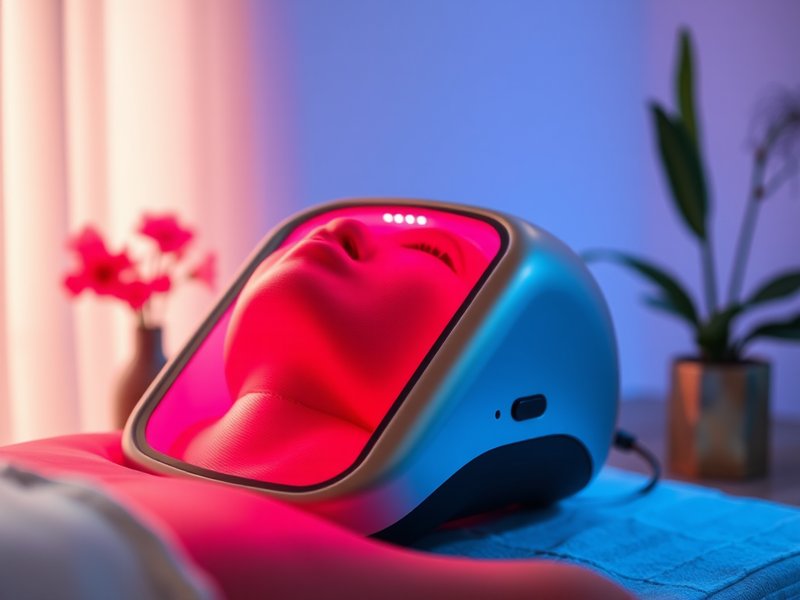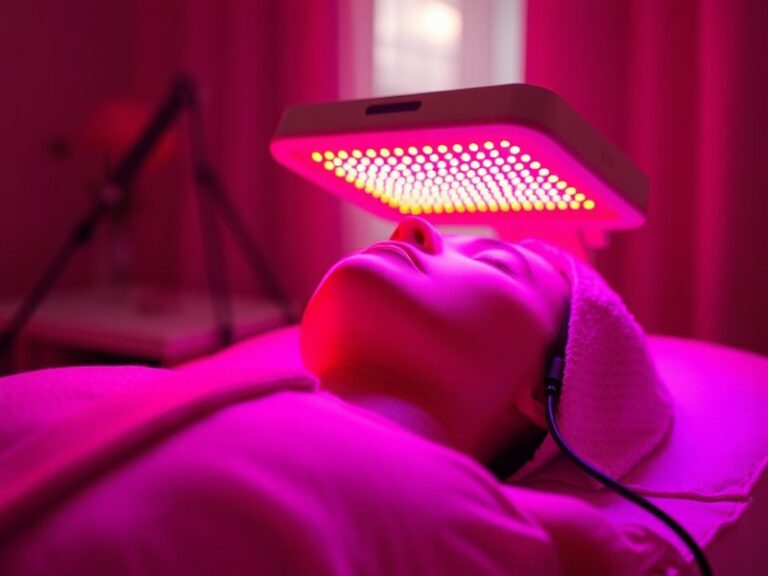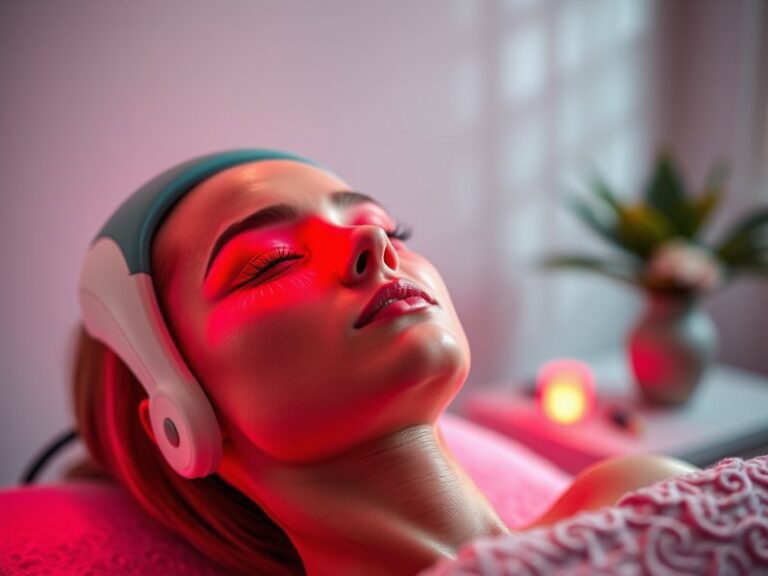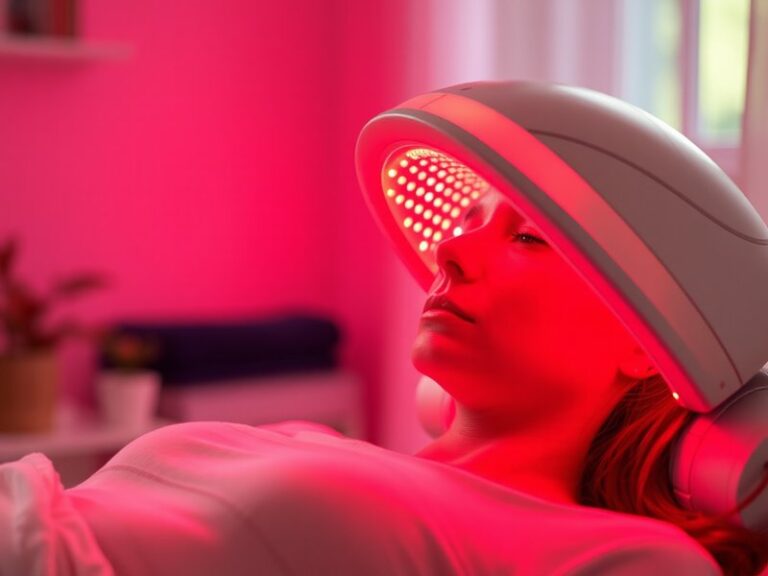Does Red Light Therapy Increase Nitric Oxide?
Does Red Light Therapy Increase Nitric Oxide?
What if there was a natural therapy that not only aided healing but also boosted circulation?
This article explores the intriguing relationship between red light therapy (RLT) and nitric oxide (NO) production in the body. By examining how RLT works, its benefits, and possible alternatives, we aim to shed light on this increasingly popular treatment and its implications for overall health and wellness.
Find insights in Does Red Light Therapy Heat Up?
Key Takeaways
- Red light therapy can stimulate the production of nitric oxide, enhancing vascular function and circulation.
- Increased nitrogen oxide levels are linked with various health benefits, including improved exercise performance and reduced inflammation.
- While RLT has numerous advantages, it’s also important to consider potential alternatives and precautions associated with its use.
What is Red Light Therapy?
Red light therapy is a non-invasive treatment that utilizes low-level wavelengths of red light to promote various health benefits. It works primarily by penetrating the skin to reach the tissues, effectively stimulating cellular processes.
RLT is grounded in photobiomodulation, which is the process by which light energy is absorbed by cells to promote healing, reduce inflammation, and improve overall health. This therapy has gained traction in various fields, from sports medicine to dermatology, for its ability to accelerate recovery and enhance skin health.
How Does Red Light Therapy Work?
When light is absorbed by cells, it triggers a series of biological responses. The primary mechanism involves the mitochondria, which are the powerhouse of the cell. Upon exposure to red light, mitochondrial respiratory chain activity increases, resulting in higher ATP (adenosine triphosphate) production. This boost in energy helps cells function more efficiently and also appears to contribute to nitric oxide production.
What are the Benefits of Red Light Therapy?
As researchers delve into the effects of RLT, numerous benefits have been identified. Let’s explore these advantageous aspects in further detail.
Enhanced Nitric Oxide Production
One of the most significant benefits of RLT is its ability to increase the production of nitric oxide in the body. NO plays a crucial role in vasodilation, allowing blood vessels to expand and improve blood flow.
Improved Healing and Recovery
Due to its impact on cellular metabolism and inflammation, RLT can accelerate healing processes for wounds, injuries, and post-surgery recovery. This is particularly advantageous for athletes and individuals in rehabilitation.
Reduction of Inflammation
RLT has been shown to decrease inflammation by reducing the production of pro-inflammatory cytokines. This can be beneficial for conditions such as arthritis, chronic pain, and skin disorders like psoriasis.
Skin Health Improvement
The application of red light therapy can stimulate collagen production, enhance skin texture, and reduce signs of aging, making it a popular choice in cosmetic treatments.
Is it Possible to Increase Nitric Oxide Levels with Red Light Therapy?
Yes, research suggests that it is indeed possible to increase nitric oxide levels through the application of red light therapy. The process is relatively straightforward, involving exposure to red light at specific wavelengths, typically between 600 to 900 nanometers.
What are the Advantages of Increasing Nitric Oxide Levels?
The potential benefits of increasing NO levels in the body through RLT include:
- Enhanced Athletic Performance: Improved blood flow can lead to better endurance and recovery times for athletes.
- Lower Blood Pressure: Higher levels of nitric oxide can help in maintaining healthy blood pressure levels due to its vasodilatory effects, promoting cardiovascular health.
- Improved Cognitive Function: Enhanced blood flow to the brain may benefit cognitive processes and overall neurological health.
What are the Disadvantages of Increasing Nitric Oxide Levels?
While increasing nitric oxide has its benefits, there are also possible challenges to consider:
- Over-vasodilation: Excessive nitric oxide can lead to extreme dilation and reduce overall blood pressure too much, posing a risk for individuals with low blood pressure issues.
- Existing Health Conditions: Those with specific health concerns, such as certain types of vascular diseases, should consult healthcare professionals before starting RLT.
What are the Things to Consider Before Starting Red Light Therapy?
Before embarking on a red light therapy regimen, certain factors should be considered to ensure safe and effective usage.
Type of Equipment
Ensure that the red light device used emits the appropriate wavelengths for effective treatment. Devices that are low-quality or emit wavelengths outside the 600 to 900 nm range may not provide the desired benefits.
Duration and Frequency of Treatments
The effectiveness of RLT is also related to treatment duration and frequency. It is best to follow guidelines based on the specific condition being treated to maximize results while minimizing risks.
Skin Sensitivity and Reactions
Assess your skin’s sensitivity before using RLT. Some individuals might experience minor reactions, and consultation with a healthcare provider may be prudent prior to commencing treatments.
What are the Alternatives to Red Light Therapy?
While red light therapy has its merits, other alternatives exist that may also improve nitric oxide levels and overall health.
Dietary Sources of Nitrates
Consume foods rich in nitrates, such as beets, spinach, and arugula. These foods naturally increase nitric oxide production in the body through dietary nitrates.
Regular Exercise
Physical activity stimulates nitric oxide production through increased blood circulation and oxygen delivery, making it an effective alternative for enhancing overall cardiovascular health.
Supplementation
Certain supplements, such as L-arginine and L-citrulline, are known to boost nitric oxide levels. They can be beneficial for individuals looking to enhance performance or recovery.
Conclusion: Is it Recommended to Use Red Light Therapy for Increasing Nitric Oxide?
Red light therapy is a promising option for individuals interested in naturally boosting nitric oxide levels in their bodies. It offers numerous health benefits, particularly for circulation and recovery. However, it’s essential to consider personal health contexts, potential side effects, and alternative methods before deciding to proceed with RLT. Consulting with a healthcare professional can provide personalized guidance tailored to individual health needs.
Frequently Asked Questions
Does Red Light Therapy have any side effects?
Red light therapy is generally considered safe, but some individuals may experience mild skin reactions or temporary soreness. It’s crucial to follow guidelines and consult a professional.
Learn the whole story Red Light Therapy Bed Frequency
How long does it take to see results from Red Light Therapy?
Results can vary based on individual circumstances and conditions treated. Many users report seeing improvements within a few weeks of regular treatment.
Can I perform Red Light Therapy at home?
Yes, many portable devices are available for at-home use. However, ensure they meet safety and effectiveness standards.
Is Red Light Therapy suitable for everyone?
While RLT is beneficial for many, those with specific medical conditions should consult their healthcare provider before starting treatment.
How often should Red Light Therapy be done to increase Nitric Oxide levels?
Frequency will depend on individual goals and responses. Many practitioners recommend starting with several sessions per week and adjusting based on results.






